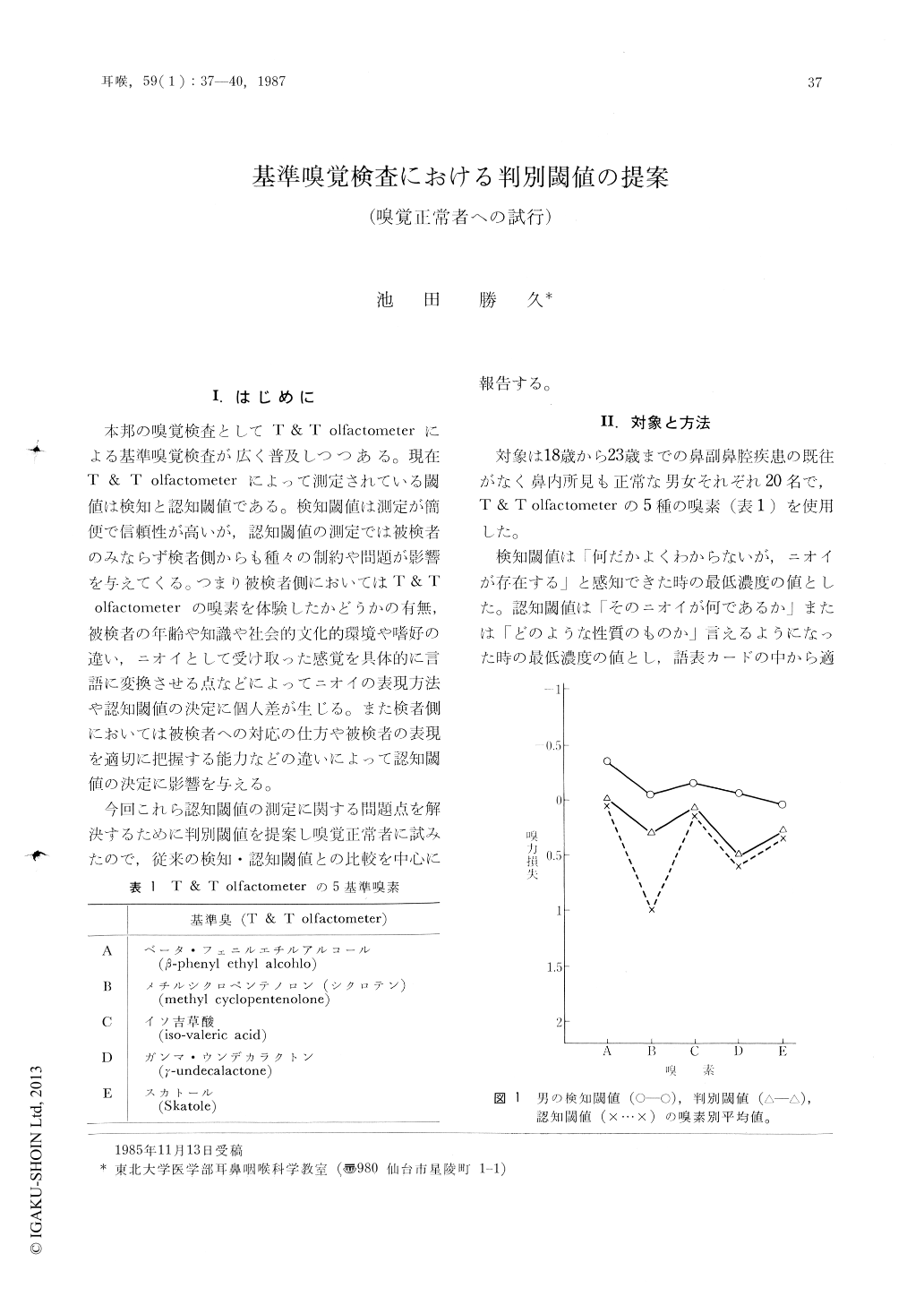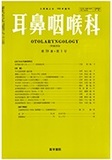Japanese
English
- 有料閲覧
- Abstract 文献概要
- 1ページ目 Look Inside
I.はじめに
本邦の嗅覚検査としてT&T olfactometerによる基準嗅覚検査が広く普及しつつある。現在T&T olfactometerによって測定されている閾値は検知と認知閾仙である。検知閾値は測定が簡便で信頼性が高いが,認知閾値の測定では被検者のみならず検者側からも種々の制約や問題が影響を与えてくる。つまり被検者側においてはT&Tolfactonieterの嗅素を体験したかどうかの有無,被検者の年齢や知識や社会的文化的環境や嗜好の違い,ニオイとして受け取った感覚を具体的に言語に変換させる点などによってニオイの表現方法や認知閾値の決定に個人差が生じる。また検者側においては被検者への対応の仕方や被検者の表現を適切に把握する能力などの違いによって認知閾値の決定に影響を与える。
今回これら認知閾値の測定に関する問題点を解決するために判別閾値を提案し嗅覚正常者に試みたので,従来の検知・認知閾値との比較を中心に報告する。
It is more difficult and less reliable to measure the recognition threshold than to do the detection threshold in T & T olfactometer. The causes are thought to be odor experience, social customs, liking, character and expression of language in the subjects, and how to treat the subjects in the experimenters. In order to resolve the problems of the recognition threshold, the author proposed the discrimination threshold and tried it to 20 males and 20 females with normal olfaction. The discrimination threshold means the minimal level of one odor where subject knows the odor to differ from the other odor which has been recognized.
By the use of the discrimination threshold, the problems of the recognition threshold were resolved to a some extent. Although the discrimination threshold was located between the detection and recognition threshold, there were differences between the detection and recognition threshold, there were differences between sexes or odors. The differences suggest that factors to have an effect on the measurement of the recognition threshold show different degree between sexes or odors.

Copyright © 1987, Igaku-Shoin Ltd. All rights reserved.


